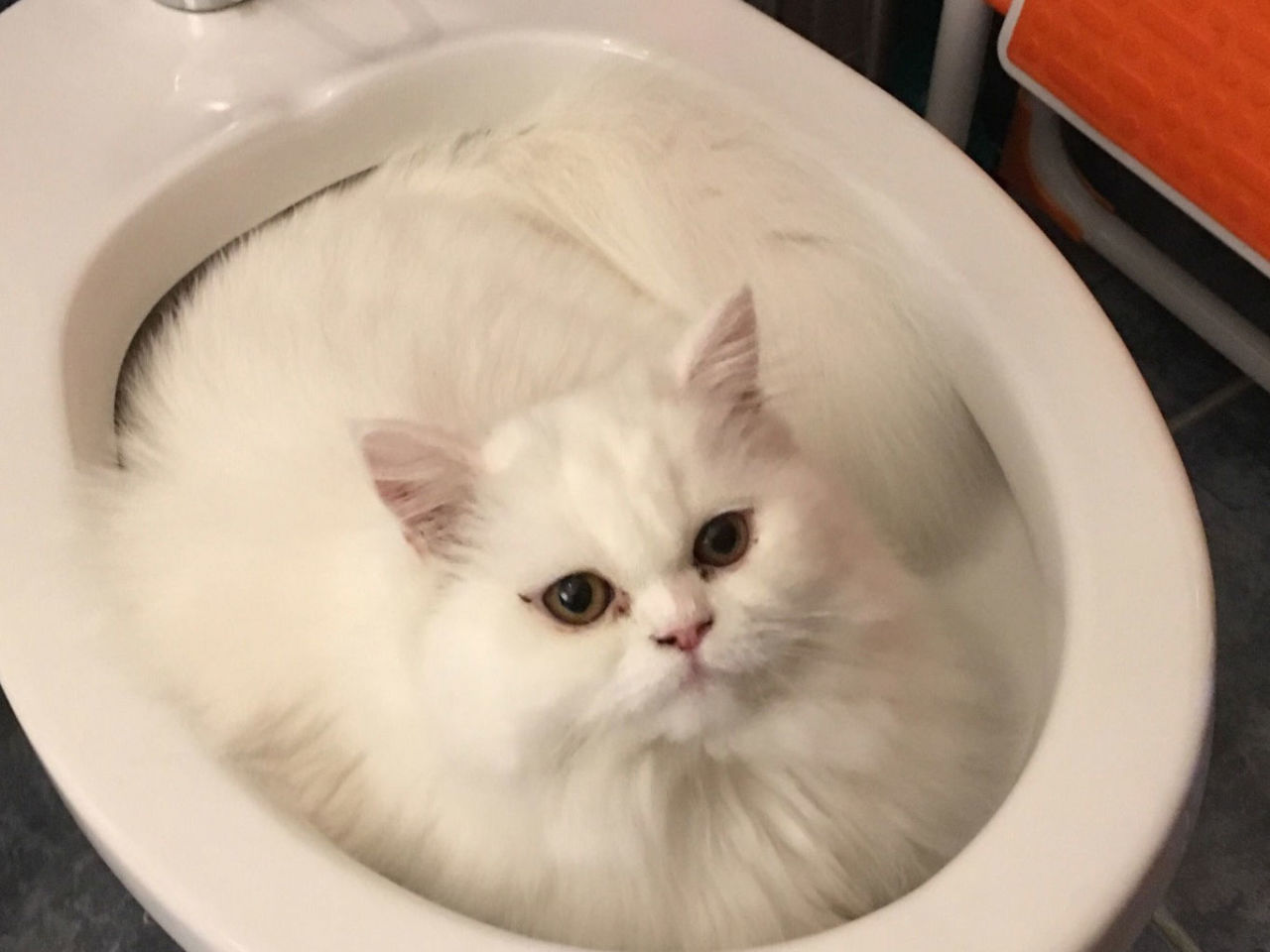An Value of Not Emptying Animal Waste Down the Toilet
An Value of Not Emptying Animal Waste Down the Toilet
Blog Article
We have uncovered this post on Should you flush animal waste down the toilet directly below on the internet and decided it made good sense to talk about it with you here.

When it concerns throwing away waste, specifically animal waste, lots of people usually turn to the convenient alternative of flushing it down the toilet. Nevertheless, this relatively very easy option can have significant effects for the setting and public health. In this short article, we'll explore why flushing animal waste down the commode is a poor idea and supply different approaches for proper disposal.
Intro
Correct waste disposal is important for preserving environmental sustainability and public health. While it might appear safe to flush animal waste down the bathroom, it can lead to numerous issues, both for the atmosphere and human well-being.
Risks of flushing pet waste
Ecological impact
Flushing pet waste presents harmful microorganisms and virus into rivers, which can adversely affect water communities. These virus can pollute water resources and harm marine life, interrupting delicate ecosystems.
Public health problems
Animal waste has damaging bacteria such as E. coli and Salmonella, which can posture serious health dangers to people. Flushing pet waste down the commode can contaminate water supplies, resulting in the spread of diseases and infections.
Alternatives to flushing
Instead of flushing pet waste down the commode, there are several alternative disposal approaches that are more environmentally friendly and hygienic.
Composting
Composting animal waste is an environmentally friendly means to dispose of it. By composting, raw material is broken down into nutrient-rich dirt, which can be made use of to feed yards and plants.
Garbage dump disposal
Getting rid of pet waste in a landfill is another option. While not as environmentally friendly as composting, it is a much safer option to flushing, as it protects against the contamination of water sources.
Family pet waste disposal systems
There are specialized pet dog garbage disposal systems readily available that securely and hygienically dispose of pet waste. These systems frequently use enzymes to break down waste and eliminate odors.
Steps to proper animal garbage disposal
To make sure correct disposal of animal waste, adhere to these actions:
Scooping and nabbing waste
On a regular basis scoop and bag pet waste using eco-friendly bags. This prevents waste from infecting the atmosphere.
Utilizing designated waste bins
Dispose of bagged pet waste in assigned waste containers, such as garden compost bins or land fill containers. Prevent flushing it down the bathroom whatsoever costs.
Cleaning litter boxes and pet areas on a regular basis
Regularly tidy can and pet dog locations to avoid the build-up of waste and microorganisms. Use pet-safe cleaning products to maintain health.
Benefits of proper disposal approaches
Embracing proper disposal techniques for pet waste supplies numerous advantages:
Decreased environmental pollution
Correct disposal methods decrease the threat of environmental pollution, securing waterways and environments from contamination
Minimized danger of water contamination.
By preventing flushing animal waste down the commode, the danger of water contamination is substantially lowered, protecting public health.
Boosted cleanliness and hygiene
Correct disposal techniques advertise much better cleanliness and health, producing a much safer environment for both humans and pets.
Conclusion
To conclude, flushing pet waste down the commode is unsafe to the atmosphere and public health. By adopting alternate disposal techniques and following proper waste monitoring methods, we can decrease the unfavorable influence of animal waste and contribute to a cleaner, much healthier world.
What To Do With Dog Poo – The Do's And Don'ts Of Disposing Of Faeces
Dog poo bins
Some councils provide dedicated dog waste bins in popular dog-walking areas that can take dog poo that has been bagged but you can legally dispose of dog waste in any public litter bin, as long as it is securely bagged. This also applies to your wheelie bin at home.
Do not flush
Water companies do not recommend flushing dog faeces down the toilet because certain parasites can survive the water processing treatment and are potentially harmful to humans. You should also never consider flushing dog poo that has been bagged down the toilet as the bags will not break down and instead create severe blockages in the sewage system.
In the woods
The Forestry Commission promotes a ‘stick and flick’ method for dealing with waste in the woods. This means finding a stick and using it to flick any poo from off the path so that it is out of the way of other walkers. You could also bury it as long as it is not in an area where there might be livestock.
Livestock
Parasites found in dog poo can be transmitted to livestock if they inadvertently eat infected faeces that has been left on grazing land. This could result in the death of sheep or abortion in cattle so you should always make sure you pick up your dog’s waste in fields where livestock could be present.

Regularly tidy can and pet dog locations to avoid the build-up of waste and microorganisms. Use pet-safe cleaning products to maintain health.
Benefits of proper disposal approaches
Embracing proper disposal techniques for pet waste supplies numerous advantages:
Decreased environmental pollution
Correct disposal methods decrease the threat of environmental pollution, securing waterways and environments from contamination
Minimized danger of water contamination.
By preventing flushing animal waste down the commode, the danger of water contamination is substantially lowered, protecting public health.
Boosted cleanliness and hygiene
Correct disposal techniques advertise much better cleanliness and health, producing a much safer environment for both humans and pets.
Conclusion
To conclude, flushing pet waste down the commode is unsafe to the atmosphere and public health. By adopting alternate disposal techniques and following proper waste monitoring methods, we can decrease the unfavorable influence of animal waste and contribute to a cleaner, much healthier world.
What To Do With Dog Poo – The Do's And Don'ts Of Disposing Of Faeces
Dog poo bins
Some councils provide dedicated dog waste bins in popular dog-walking areas that can take dog poo that has been bagged but you can legally dispose of dog waste in any public litter bin, as long as it is securely bagged. This also applies to your wheelie bin at home.
Do not flush
Water companies do not recommend flushing dog faeces down the toilet because certain parasites can survive the water processing treatment and are potentially harmful to humans. You should also never consider flushing dog poo that has been bagged down the toilet as the bags will not break down and instead create severe blockages in the sewage system.
In the woods
The Forestry Commission promotes a ‘stick and flick’ method for dealing with waste in the woods. This means finding a stick and using it to flick any poo from off the path so that it is out of the way of other walkers. You could also bury it as long as it is not in an area where there might be livestock.
Livestock
Parasites found in dog poo can be transmitted to livestock if they inadvertently eat infected faeces that has been left on grazing land. This could result in the death of sheep or abortion in cattle so you should always make sure you pick up your dog’s waste in fields where livestock could be present.

We were shown that report about Should you flush animal waste down the toilet from an acquaintance on a different site. Do you know about somebody who is in the market for the subject? Do not hesitate to promote it. I recognize the value of your readership.
Website Report this page